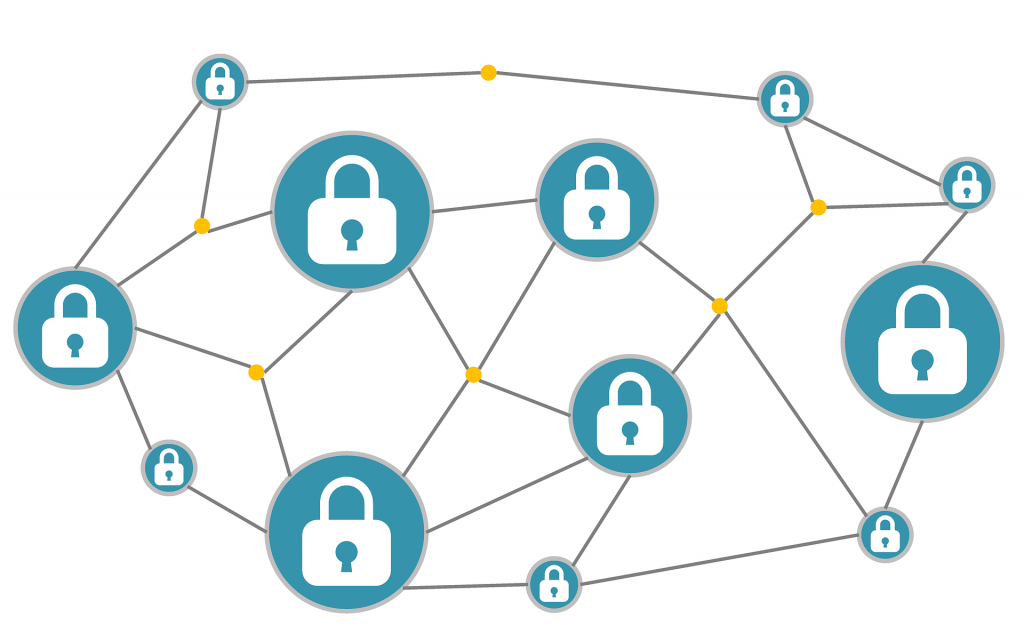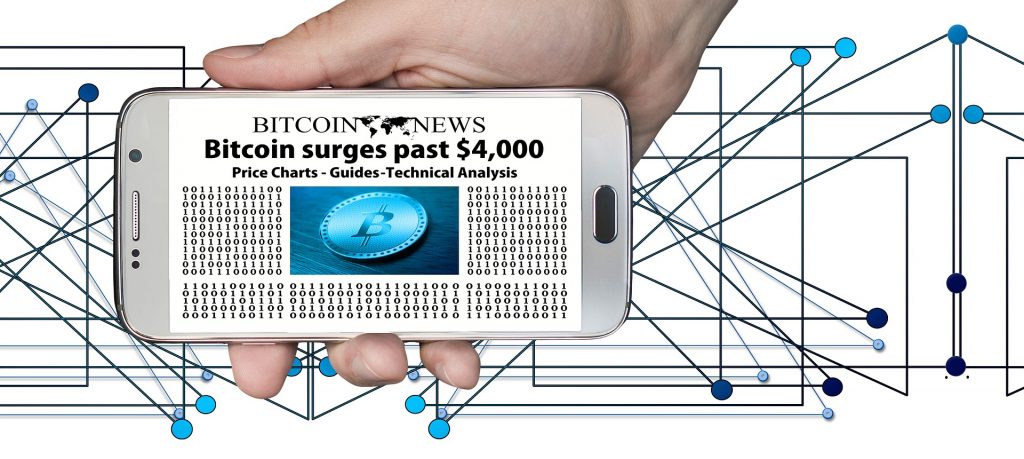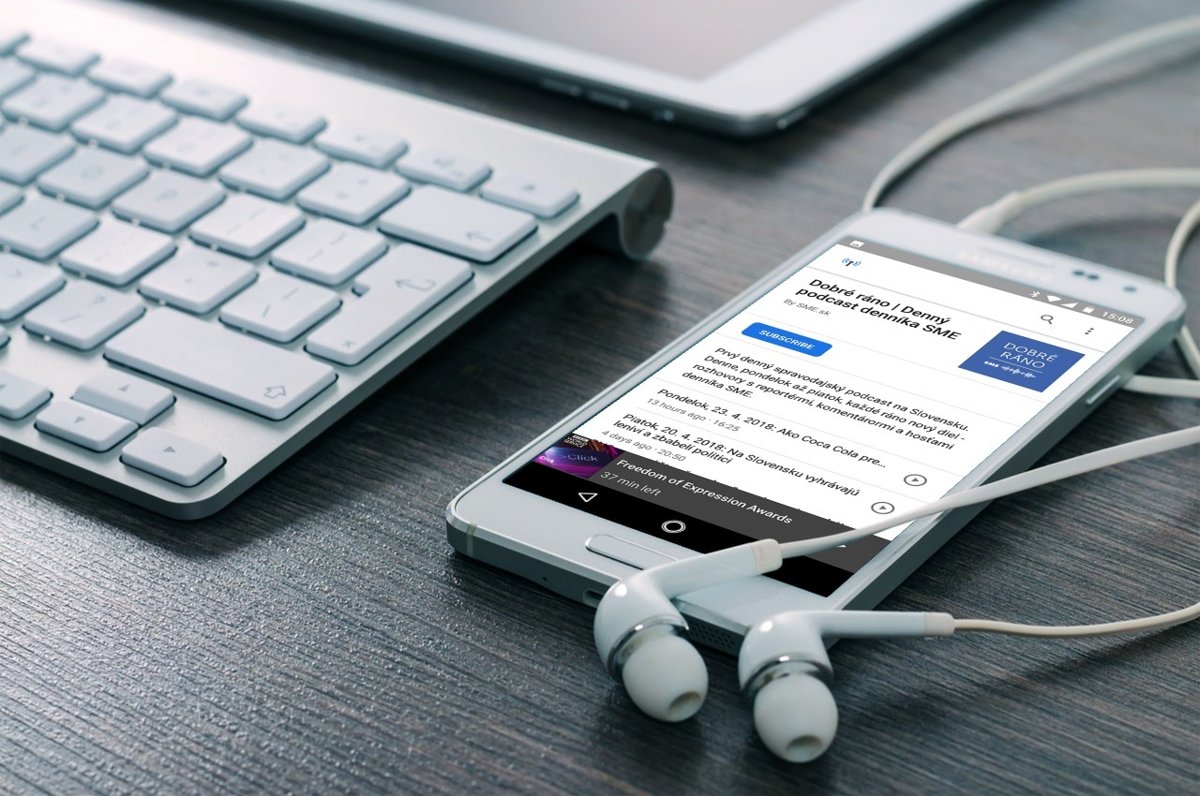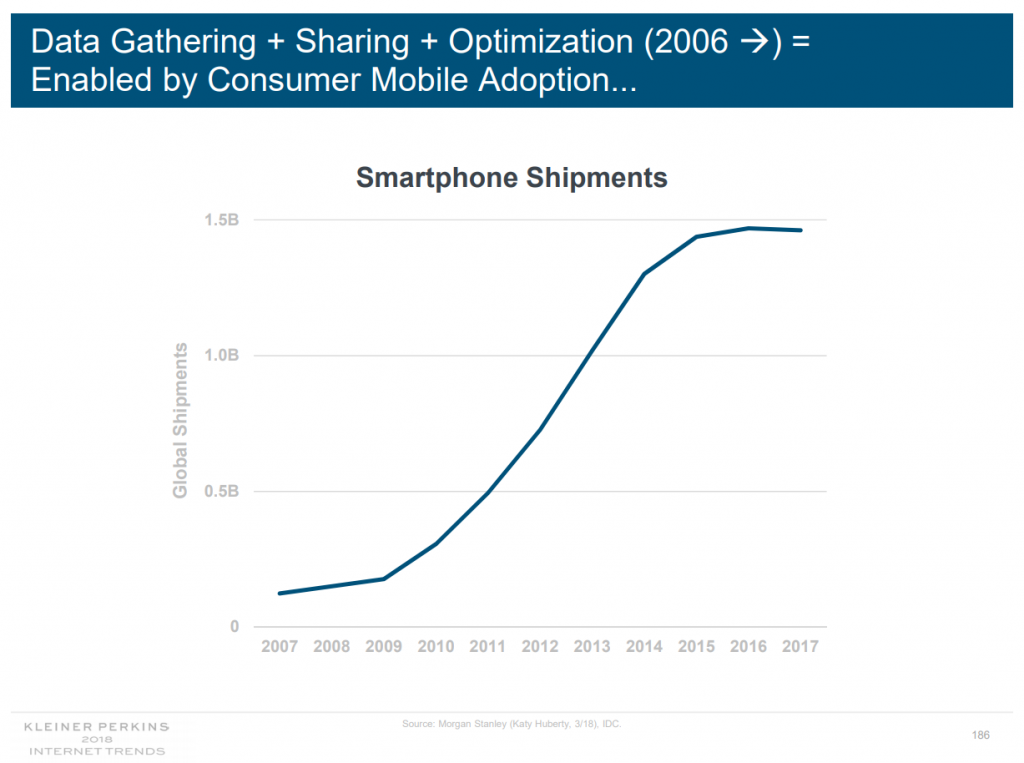
We are currently in a phase of seeing in blockchain, the ledger technology that underpins cryptocurrencies like Bitcoin, the solution to problems in nearly every industry. There is something alluring about a technology that is so easy to set up, does not require a leader or central controller, and which can store anything permanently. But would it work for media?
First off, it’s worth talking about what blockchain is – and isn’t. Blockchain is the name we have given the underlying database system created by Satoshi Nakamoto, the so-far unidentified maker of bitcoin. Nakamoto needed to solve a couple of problems if he (or she) was to create a digital currency that was unhackable. He first needed to get around the problem of copying: when it’s easy to copy something digital, a digital currency needs to not only be impossible to duplicate, but also everyone needs to be able to see that it cannot be duplicated. The other problem he wanted to get around is to make sure the process of recording and validating transactions was not dominated by one person, either relying on some central authority, or that someone could take over the system and manipulate transactions.
These problems were neatly solved by the blockchain. Embedded in software, copies of the ledger of transactions would be stored on multiple computers — basically anyone who wanted to join in. All subsequent transactions would be added to the ledger in sequential order, connecting each block cryptographically, so any attempt at tampering with the record would be discarded. The task of recording those transactions would be done by miners — people who had a copy of the blockchain on their computer, and used their computer’s resources to run through permutations until they found a particular sequence of digits. The first to do so would have the right to add a block to the chain, and earn bitcoin. This created an incentive for people to participate in storing copies of the blockchain, and to record the transactions.
So what has all this got to do with journalism? Well, the blockchain has lots of parts to it that appeal. Together they offer what some believe would be a different way of connecting the components of the media economy — those who produce content, those who consume it, those who publish it and those who currently finance it through advertising.
To understand this, it’s better to take each part of blockchain’s appeal one by one.
Micro-transactions
Micropayments — basically defined as pay per article — have long been the holy grail of digital media, as an adjunct to rather than a replacement for subscription and advertising. The idea is compelling because it means that people who care enough about a single piece of content could pay for it; no need for a subscription, no need to whip out a credit card, no need to think too hard about whether the content is worth it.
The reality is that micropayments will only work when the transaction costs are reduced to near zero. This hasn’t happened because we’re still using credit cards, or a variation thereof (PayPal, Apple Pay), where costs remain high. The alternative is to store value elsewhere — in a wallet, say — which is then transferred in the form of micropayments. But it is still one or two many steps for most users. Wallets are only appealing to users when there are obvious benefits or no alternative. Think ride sharing, or bike sharing. If I can only unlock a bike by uploading credit to their account, then I’ll do it, but I won’t be happy, because that money is all locked with them. And in a recent case, the money might disappear entirely if the company closes down suddenly. Expect wallets to get a bad rap from here on in.
So how could blockchain help? The first, and perhaps only, proven use case of blockchain is Bitcoin. The Bitcoin blockchain network has been running for nearly 10 years, and has an uptime of 99.992364787%. (Really.) So it’s a proven payments system. Unfortunately, it’s also hugely expensive: to move bitcoin from one address to another (in other words, to make a transaction) is still costly — often more than the value of the transaction itself. This is because the miners — the people running the computers that are adding blocks to the blockchain — need an incentive beyond earning bitcoin from the correct ‘guessing’ of the mathematical puzzle. So those making a transaction add a ‘tip’ to the transaction request to bump it up the queue. All this is hugely inefficient and often means transactions can take hours to be recorded. This is fine if you are moving large amounts, or if you just see bitcoin as a valuable commodity, but this is not what Bitcoin and blockchain were designed for. The idea is that it would make it possible for people to transact simply, securely, and without anyone creaming anything off the top (or blocking the transaction.)
Now we’re getting closer. If cryptocurrencies can overcome some of their limitations — high transaction costs associated with adding blocks to the chain, poor usability and security issues — then they definitely offer a way forward. You’d still have to convert from fiat into a currency or token, but that might be feasible if the transaction costs can be lower than real-world transactions. This will probably happen first on Bitcoin Cash, which is what is called a ‘hard fork’ from the original Bitcoin (now called Bitcoin Core.) Bitcoin Cash adherents talk about reclaiming Bitcoin from the Core people by focusing on increasing the transaction volume; Bitcoin Cash supports about 100 transactions per second. Compare that to Bitcoin Core’s 7.
One example of a media company exploiting this is Yours.org. The site, according to its founder Ryan Charles, is a platform designed to reward content creators. After trying several other cryptocurrencies unsuccessfully, they turned to Bitcoin Cash allowing users to charge for content if they wished, using Bitcoin cash. One user, Rivers and Mountains, charges about $5 for the full article after a short précis. His articles (about Bitcoin Cash, mostly) earn him up to $900 each. (Yours charges 10 cents to post content and takes 5% of purchases.)
As the founder of Yours, Ryan Charles, puts it: “With Bitcoin Cash we have actual low fees and the payments are actually irreversible. This is kind of amazing. This didn’t used to exist. This is actually the fantasy of micropayments that people have talked about since the 1990s. We actually have it for real starting last August.”

Tokenisation
Yours.org is somewhat unusual in that no extra tokens are involved. You buy Bitcoin Cash and you use that to pay for content. And that may end up being the most popular way of doing things. But most other platforms in this space use their own tokens — basically a version of bitcoin on its own blockchain, like a separate currency. Remember, a blockchain is like any database, it can pretty much store whatever you want on it. Bitcoin, a digital currency, was the original use case which inspired (and required) blockchain. But anything could be stored there, usually in token form.
Steemit, for example, is a social media platform that rewards users with its own token — Steem — which can be converted into dollars on an exchange. And, like Yours, not only are content creators rewarded but anyone clicking on like buttons, adding or voting on comments. All this, the argument goes, helps to oil the ecosystem and promote better content. (Steemit is doing very well, although you might think of it as more of a social platform than a media one. Steem’s market capitalisation — if you add all the tokens together and sell them at the present price — is more than $400 million at the time of writing. It has about half a million accounts.)
Having tokens opens up new ways to move value around the system. Brave, for example, is essentially a browser like Safari, Firefox or Chrome, that among other features builds into it a way for users to reward publishers. It works like this: download Brave, buy some Brave Attention Tokens with a cryptocurrency like bitcoin, and then decide how much you’re going to pay your favourite websites each month. So long as you use the Brave browser to visit those websites, this will be calculated and distributed automatically.
This is probably too many steps for most people, but it’s a start. Brave, like a lot of blockchain-based startups, raised money through something called an Initial Coin Offering, or ICO. An ICO is a bit like an IPO, in that those who are enthusiastic about the business buy into it by buying the tokens. Owners of those tokens can then use them in some way tied to the service. But as I explain below, this is not quite as simple, or legal, as it sounds.
In theory though, the idea is simple enough: those holding tokens can reward other people on the same platform — Brave, for example — for activity that benefits them. The token is a currency, but with benefits. The obvious one is paying for articles but they could also be used, for example, to reward contributors to an article (crowd-sourcing): So the author could ask for data for an article, and disperse tokens matching the size of each contribution.
The potential of tokens is that could unleash all sorts of new micro-transactions, effectively monetising content and content-related activity that so far has not been monetised. For example, existing content — think all the stories lying in archives, photos, videos, lying in archives that can’t be readily monetised because it would be too administratively cumbersome. Each item could be indexed to the blockchain and each user charged via a smart contract (more on them below.) Tokens promise a way to increase the overall value of content and access to content created by other readers. So, for example, you could charge users to comment on certain stories, effectively filtering out (some of the) time-wasters and trolls, and thereby increasing the value of the content produced by commenters by raising the bar. Similarly, you could charge for access to that content, creating a sort of club of readers. These costs would be small, but might act as enough of a barrier to flippant and time-wasting content.
Fighting censorship
Another appeal of blockchain technology is its distributed, decentralised nature. The blockchain — the ledger of transactions, but also potentially the database of the content itself — is not held anywhere centrally, so no one person or institution, in theory, can close it down or change that content. (Nor, in theory, can they monitor it because, while the transactions themselves may be visible to all, who or what exactly was transacted may not be. The Bitcoin blockchain, for example, can be explored in detail, but all you can see are amounts of bitcoin, bitcoin addresses (where the bitcoin travelled from and to) and the date and time of the transaction. Deeper study might reveal patterns, especially when an address is linked to an individual. But it’s detective work, and still more art than science.)
The blockchain — the ledger backbone — can therefore not be easily destroyed, disrupted, hacked or altered. That means it is more likely to survive some government’s, or individual’s, attempt to stop information from finding its way out. But it also means that the information stored on it has credibility: it’s much more likely not to have been tampered with, and because it has timestamps and other data attached, can be relied upon as an accurate record of what happened.
So several outfits are exploring opportunities the blockchain offers to reduce the potential for censorship. Publiq, for example, offer their distributed storage infrastructure to store all content — think of a peer to peer network like Napster, where users who host the content would be rewarded with Publiq’s tokens. A hash — a short unique code — of each piece of content on Publiq’s P2P network would be stored in Publiq’s blockchain, so any corruption of the data, intentional or otherwise, would be noticed straight away. So no-one can alter or remove the existing content — think censors or fake news hackers — but the content can be amended. So authors could for example add notes or corrections to the original content. Publiq’s Gagik Yeghiazarian tells me this has already happened, when one content provider was able to add amended transcripts to a story that some readers rightly claimed was incorrect. The correction was added to the original content, leaving it annotated but intact. With even mainstream news organisations over-writing or ‘fixing’ content without properly flagging it to readers, this feature is welcome.

Funding
The obvious way to reward journalism — the creators of content — via the blockchain is to remove the obstacles preventing people from paying for content that has been created — the micropayments model described above. That’s great for people who can create content on spec — in the hope that someone is going to reward them for it, either through tips or through a paywall.
Then there’s the funding of proactive journalism: the crowdsourced model, where enough people believe the story or content will be worth consuming that they’re ready to pay for it in advance. Similarly, the blockchain can help, not only with micropayments but with an immutable record of who paid what for what, and what that entitles them to.
But what about bigger content that require deeper funding — an investigative podcast series, say, or a documentary? Companies like Qravity are looking to break down the various tasks of a project, which are then farmed out to team members. Instead of being paid for their contribution they’re given tokens, which give them a stake in the ownership of the project proportionate to the number of tokens they hold. They’re therefore transparently tied to the project and can share in its success.
Content licensing
And then there’s monetising that content once it has been created. Or finding a way to monetise one’s archive. Take AllRites, a media company based in Singapore which handles licensing of content on behalf of major TV and video players in the region. They’re creating a platform that would move this marketplace onto the blockchain, in theory simplifying the licensing of that content, while also opening up B2C licensing — where you or I could buy streaming rights to movies, tv shows or documentaries by the hour, say — as well as a content funding platform. Initially, content would be represented on the blockchain via a unique identifier, but ultimately, their CEO Riaz Mehta hopes, technology will allow the content in its entirety to be stored on a blockchain, simplifying the process.
So why? What’s the point of this? There are several advantages, Mehta says. First off, an ICO allows them to raise money that venture capitalists would never provide because they wouldn’t see the longer term, and they’re only just starting to get blockchain. “For them,” Rias told me, this is the frontier land and they’re very cautious about what they put into it.”
But more significantly, they believe that not only will it make for a more efficient marketplace, but that content locked up in the long tail of providers could be more readily found and monetised. By registering the content on AllRites’ blockchain even niche providers or content creators themselves would be able to prove their rights, advertise their wares and sell to a much larger market.
There are other efforts in this area. Po.et is a shared ledger recording ownership and metadata for digital assets. Qravity is both a studio and a distributor of content created by decentralised teams. Both aim to build platforms that level the playing field for content makers. In other words, disintermediating the middle parts that conspire against smaller producers of content.

Smart contracts
A key part of the appeal of blockchain is the idea that embedded into it could be more than just tokens of value. You could store the content itself, theoretically, or you could store applications — code that actually does something. These are, or could be, smart contracts — a piece of code that, in its simplest form, kicks off an action, or sequence of actions, based on some input. So, on a certain date, ownership of a token could change hands. So imagine I have loaned a video to you, the record of which is stored on the blockchain. When that loan expires, ownership (and control) of that video returns to me. Part of the smart contract could delete it from your device, say, or require you to extend the loan, releasing tokens to me in payment. These smart contracts would effectively unleash a lot of the potential for what is otherwise just another database. Qravity, for example, plans to use smart contracts to determine how many tokens to distribute to each member of a team based on their contribution, in the example described above.
Warnings
ICOs
There are concerns however. Quite a few of these blockchain companies are launching, or have launched, initial coin offerings, or ICOs, to raise funds. These have proved very lucrative for some startups, but their appeal is beginning to fade. Regulator anxiety is forcing every ICO to move away from calling their tokens securities, for one thing — so while they are still raising money from the sale of tokens, those tokens do not represent a stake in the underlying company. Instead the tokens will be used to buy services or products. And there’s the issue of incentive: if companies do raise money through ICOs, how can they be held to account over how that money is used?
The first problem with ICOs and the subsequent blizzard of tokens is: why? Why can’t people just buy those services with their own currency? The argument is usually two-fold: the tokens allow money to be transferred without constraints of borders/currencies, and secondly, that it allows more value to be transferred than was available previously. Brave moves tokens (value) between the three main pillars of media — the users, the publishers and advertisers. So users, for example, can earn money directly from advertisers by giving their consent to view ads. Similarly, they can reward content producers on a proportional basis depending on how much of their content they viewed during a month.
But I think the bigger worry is that these systems are too complicated for the end user. I tied myself in knots trying to chart the various transactions that would take place within Brave’s ecosystem. And that was one of the simpler ones. These complicated arrangements may work in B2B, but the diagrams that accompany nearly all these models highlight the same problem: For the solution to work it must be invisible or intuitive to the end user. He or she must not have to juggle multiple tokens, or perform elaborate calculations in her head, or have to require lots of separate apps, accounts or wallets. And they don’t want to see lots of real money locked up in tokens. I can’t help coming away from reading some of these white papers (the conventional way these days to explain how these blockchains and tokens might work) and feeling there might well be a simpler way of doing things.
Blockchain is often mentioned in the same breath as the invention of the internet. That could be true. I would say that for it to be successful it must be closer in analogy to the invention of the World Wide Web — when Sir Tim Berners-Lee came up with a simple layer of links embedded in a familiar text-and-graphic interface which unlocked the potential of the plain vanilla and impenetrable internet. Until the blockchain is able to offer that, talk of its disruptive power in media is premature.
Of course, I might be wrong. Efforts like Civil hope to build a whole ecosystem — a platform encompassing many of the features I’ve described — and are already building a portfolio of news organisations. They describe it as a Netflix strategy — instead of waiting for someone else to aim big, they’re doing it themselves. And Yours Inc’s Charles points to his company’s buy button, seamlessly woven into any webpage, that would allow anyone with Bitcoin Cash to pay a user for his content, in the same way we click on the Facebook like button now. So there is traction, of sorts.
Platforms and standards
Most of the startups I spoke to are keen to point out that they’re not pursuing blockchain technology blindly, and ignoring other technologies — like artificial intelligence, for example. Inkrypt’s co-founder and CEO Muhammad Ali Chaudhary, for example, says: “It is important to realize that blockchain ledgering is just one piece, albeit a very necessary one, of the technical solution being provided by Inkrypt. We are implementing blockchain technology in a particular way for a specific use case and at the end of the day we are a media tech company, as opposed to a ‘blockchain’ company.”
For sure, there will come a time when these companies decide it’s better not to even use the word blockchain to describe what they’re doing. And I think we’ll see some quietly disappear when they realise that journalism is for most people both a passion and a job, and that it might be hard to build a critical mass of journalists and content creators willing to be guinea pigs for untried and untested business models.
What I think needs to happen in the longer term is that independent media, organisations, or funders should work on building standards and platforms that allow all these tokenised initiatives to cooperate. We are some way from a world where people will be comfortable with handling lots of different tokens, and it feels like a reverse if we push users in that direction. Better would be to encourage interchangeability — say an exchanges where you can easily buy and transfer your tokens. Or, where one token rules all. In that sense, companies like Yours.org may have a head start — building APIs, or application programming interfaces, software that allows services to talk to each other — for other content makers to plug into the Yours.org platform.
Ultimately though, I am optimistic that out of all these spaghetti-like flowcharts might emerge a model for media to find a better way of rewarding great content, keeping advertisers happy, and tapping into loyal audiences. I just don’t think we’re quite there yet.
]]>

 Clémence Petit-Perrot is the Children’s Radio Foundation’s Learning and Innovation Director. She oversees the development all new initiatives within the organisation. Part of her portfolio includes piloting technological solutions like WhatsApp to increase listeners engagement and measure the radio shows’ impact. Before joining CRF, she was the Southern Africa correspondent for Radio France Internationale (RFI). She also worked for the South African production company DOXA, producing social documentary films and leading a digitisation project of anti-Apartheid audiovisual archives.
Clémence Petit-Perrot is the Children’s Radio Foundation’s Learning and Innovation Director. She oversees the development all new initiatives within the organisation. Part of her portfolio includes piloting technological solutions like WhatsApp to increase listeners engagement and measure the radio shows’ impact. Before joining CRF, she was the Southern Africa correspondent for Radio France Internationale (RFI). She also worked for the South African production company DOXA, producing social documentary films and leading a digitisation project of anti-Apartheid audiovisual archives. Linda Daniels is a journalist by training and has worked in print, digital and broadcast media. She has reported on a range of issues, which include climate change, Intellectual Property and South African politics. Her work has appeared in local and international publications. Between 2013 and 2018, she worked at the Children’s Radio Foundation as the Radio Capacity Building Associate and managed the WhatsApp Integration project.
Linda Daniels is a journalist by training and has worked in print, digital and broadcast media. She has reported on a range of issues, which include climate change, Intellectual Property and South African politics. Her work has appeared in local and international publications. Between 2013 and 2018, she worked at the Children’s Radio Foundation as the Radio Capacity Building Associate and managed the WhatsApp Integration project.









![By Jasveer10 [CC BY-SA 4.0 (https://creativecommons.org/licenses/by-sa/4.0)], from Wikimedia Commons](https://www.kbridge.org/wp-content/uploads/2018/07/Mary-meeker-hed-2015.jpg)
